Stress Suppression Design for Radiofrequency Microelectromechanical System Switch Based on a Flexible Substrate
Abstract
:1. Introduction
2. Theoretical Model
3. Materials and Tools
4. Design and Simulation
5. Fabrication
6. Results and Discussion
7. Conclusions
Author Contributions
Funding
Data Availability Statement
Conflicts of Interest
References
- You, D.W.; Fu, X.; Herdian, H.; Wang, X.L.; Narukiyo, Y.; Fadila, A.A.; Lee, H.J.; Ide, M.; Kato, S.; Li, Z.; et al. A Ka-Band 64-Element Deployable Active Phased-Array TX on a Flexible Hetero Segmented Liquid Crystal Polymer for Small Satellites. IEEE Microw. Wirel. Technol. Lett. 2023, 33, 903–906. [Google Scholar] [CrossRef]
- Devi, Y.U.; Rukmini, M.S.S.; Madhav, B.T.P. Liquid crystal polymer based flexible and conformal 5G antenna for vehicular communication. Mater. Res. Express. 2018, 6, 016306. [Google Scholar] [CrossRef]
- Anilkumar, T.; Madhav, B.T.P.; Rao, M.V.; Nadh, B.P. Bandwidth reconfigurable antenna on a liquid crystal polymer substrate for automotive communication applications. AEU-Int. J. Electron. C 2020, 117, 153096. [Google Scholar] [CrossRef]
- Zhou, Z.P.; Li, W.Q.; Qian, J.; Liu, W.H.; Wang, Y.M.; Zhang, X.J.; Yashchyshyn, Y.; Wang, Q.P.; Shi, Y.P.; Zhang, Y.F. Flexible Liquid Crystal Polymer Technologies from Microwave to Terahertz Frequencies. Molecules 2022, 27, 1336. [Google Scholar] [CrossRef]
- Kim, S.; Rida, A.; Lakafosis, V.; Nikolaou, S.; Tentzeris, M.M. 77-GHz mmWave antenna array on liquid crystal polymer for automotive radar and RF front-end module. ETRI J. 2019, 41, 262–269. [Google Scholar] [CrossRef]
- Zhang, X.; Liu, J.; Cai, P.; Kärnfelt, C.; Wang, X.; Ma, S.W.; Morris, J.; Zirath, H. Millimeter-wave ultra-wideband bandpass filter based on liquid crystal polymer substrates for automotive radar systems. Microw. Opt. Technol. Lett. 2008, 50, 2276–2280. [Google Scholar] [CrossRef]
- Lee, D.; Nguyen, C. A millimeter-wave dual-band dual-polarization antenna on liquid crystal polymer. In Proceedings of the 2014 IEEE Antennas and Propagation Society International Symposium (APSURSI), Memphis, TN, USA, 6–11 July 2014. [Google Scholar]
- Kathuria, N.; Seet, B.C. 24 GHz Flexible Antenna for Doppler Radar-Based Human Vital Signs Monitoring. Sensors 2021, 21, 3737. [Google Scholar] [CrossRef] [PubMed]
- Peng, X.X.; Du, C.Z. A flexible CPW-fed tri-band four-port MIMO antenna for 5G/WIFI 6E wearable applications. AEU-Int. J. Electron. C 2024, 174, 155036. [Google Scholar] [CrossRef]
- Nadh, B.P.; Madhav, B.T.P.; Kumar, M.S.; Kumar, T.A.; Rao, M.V.; Reddy, S.S.M. MEMS-based reconfigurable and flexible antenna for body-centric wearable applications. J. Electromagnet. Wave. 2022, 36, 1389–1403. [Google Scholar] [CrossRef]
- Kim, C.; Kim, J.K.; Kim, K.T.; Yoon, Y.K. Micromachined wearable/foldable super wideband (SWA) monopole antenna based on a flexible liquid crystal polymer (LCP) substrate toward imaging/sensing/health monitoring systems. In Proceedings of the 2013 IEEE 63rd IEEE Electronic Components and Technology Conference, Las Vegas, NV, USA, 28–31 May 2013. [Google Scholar]
- Ali Khan, M.U.; Raad, R.; Tubbal, F.; Theoharis, P.I.; Liu, S.; Foroughi, J. Bending analysis of polymer-based flexible antennas for wearable, general IoT applications: A review. Polymers 2021, 13, 357. [Google Scholar] [CrossRef]
- Lee, S.Y.; Park, K.I.; Huh, C.; Koo, M.; Yoo, H.G.; Kim, S.; Ah, C.S.; Sung, G.Y.; Lee, K.J. Water-resistant flexible GaN LED on a liquid crystal polymer substrate for implantable biomedical applications. Nano Energy 2012, 1, 145–151. [Google Scholar] [CrossRef]
- Park, R.; Lee, D.H.; Koh, C.S.; Kwon, Y.W.; Chae, S.Y.; Kim, C.S.; Jung, H.H.; Jeong, J.; Hong, S.W. Laser-Assisted Structuring of Graphene Films with Biocompatible Liquid Crystal Polymer for Skin/Brain-Interfaced Electrodes. Adv. Healthc. Mater. 2024, 13, 2301753. [Google Scholar] [CrossRef] [PubMed]
- Lee, S.E.; Jun, S.B.; Lee, H.J.; Kim, J.; Lee, S.W.; Im, C.; Shin, H.C.; Chang, J.W.; Kim, S.J. A flexible depth probe using liquid crystal polymer. IEEE Trans. Biomed. Eng. 2012, 59, 2085–2094. [Google Scholar]
- Yun, S.; Koh, C.S.; Jecong, J.; Seo, J.; Kim, S.J. Remote-controlled fully implantable neural stimulator for freely moving small animal. Electronics 2019, 8, 706. [Google Scholar] [CrossRef]
- Kottapalli, A.G.P.; Tan, C.W.; Olfatnia, M.; Miao, J.M.; Barbastathis, G.; Triantafyllou, M. A liquid crystal polymer membrane MEMS sensor for flow rate and flow direction sensing applications. J. Micromech. Microeng. 2011, 21, 085006. [Google Scholar] [CrossRef]
- Kottapalli, A.G.P.; Asadnia, M.; Miao, J.M.; Barbastathis, G.; Triantafyllou, M.S. A flexible liquid crystal polymer MEMS pressure sensor array for fish-like underwater sensing. Smart. Mater. Struct. 2012, 21, 115030. [Google Scholar] [CrossRef]
- Nie, M.; Yang, H.S.; Xia, Y.H. Graphene based strain sensor with LCP substrate. IOP Conf. 2018, 307, 012051. [Google Scholar] [CrossRef]
- Redhwan, T.Z.; Alam, A.U.; Haddara, Y.M.; Howlader, M.M.R. Copper and liquid crystal polymer bonding towards lead sensing. Jpn. J. Appl. Phys. 2018, 57, 02BB03. [Google Scholar] [CrossRef]
- Han, L.; Chen, L.J.; Qin, R.J.; Wang, K.; Zhang, Z.Q.; Nie, M.; Huang, X.D. Multi-Physical Models of Bending Characteristics on the Double-Clamped Beam Switch for Flexible Electronic Devices Application. Sensors 2020, 20, 7074. [Google Scholar] [CrossRef]
- Han, L.; Yu, Y.; Qin, R.J.; Zhang, Z.Q.; Su, S. Static Modeling of Bending Characteristics on V-Shaped Beam Actuator Based on Flexible Substrate. IEEE Trans. Electron. Dev. 2019, 66, 5295–5300. [Google Scholar] [CrossRef]
- Han, L.; Gao, X.F. Modeling of Bending Characteristics on Micromachined RF MEMS Switch Based on LCP Substrate. IEEE Trans. Electron. Dev. 2019, 63, 3707–3712. [Google Scholar] [CrossRef]
- Schröder, S.; Niklaus, F.; Nafari, A.; Westby, E.R.; Fischer, A.C.; Stemme, G.; Haasl, S. Stress-minimized packaging of inertial sensors by double-sided bond wire attachment. J. Microelectromech. Syst. 2015, 24, 781–789. [Google Scholar] [CrossRef]
- Hao, Y.C.; Yuan, W.Z.; Xie, J.B.; Shen, Q.; Chang, H.L. Design and verification of a structure for isolating packaging stress in SOI MEMS devices. IEEE Sens. J. 2016, 17, 1246–1254. [Google Scholar] [CrossRef]
- Xing, B.W.; Zhou, B.; Wang, J.; Hou, B.; Li, X.; Wei, Q.; Zhang, R. A novel packaging stress isolation chip for MEMS devices. In Proceedings of the 2019 IEEE SENSORS, Montreal, QC, Canada, 27–30 October 2019. [Google Scholar]
- Wang, K.; Han, L.; Xu, Y.X.; Chai, Z.E.; Ren, J.W.; Wang, J.; Wang, Z.Y.; Qin, M.; Zhao, F. The Control of Substrate Flatness for Flexible LCP-based Devices by Temporary Bonding and Two-step Etching Method. In Proceedings of the 2023 Second International Conference on Electrical, Electronics, Information and Communication Technologies (ICEEICT), Trichirappalli, India, 5–7 April 2023. [Google Scholar]
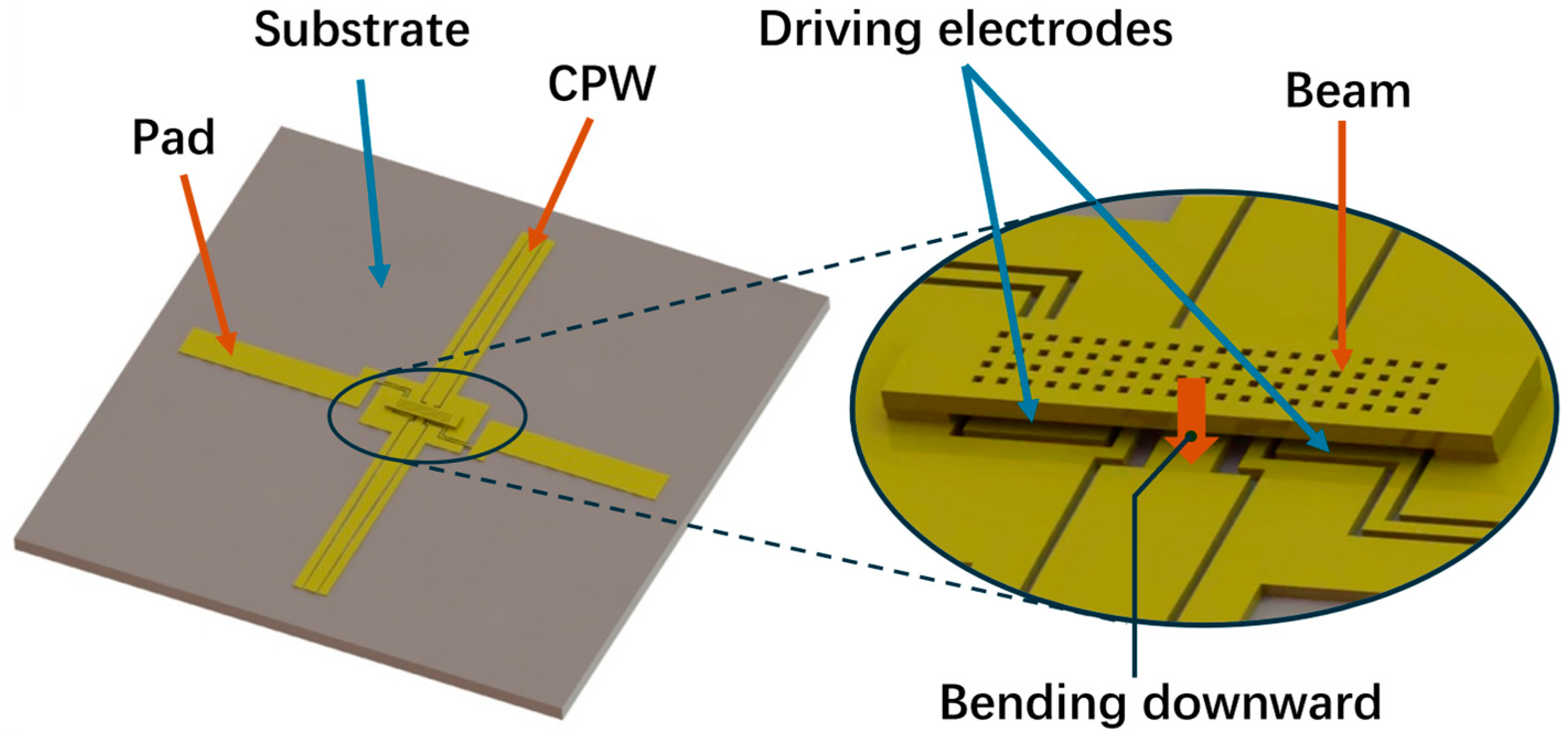

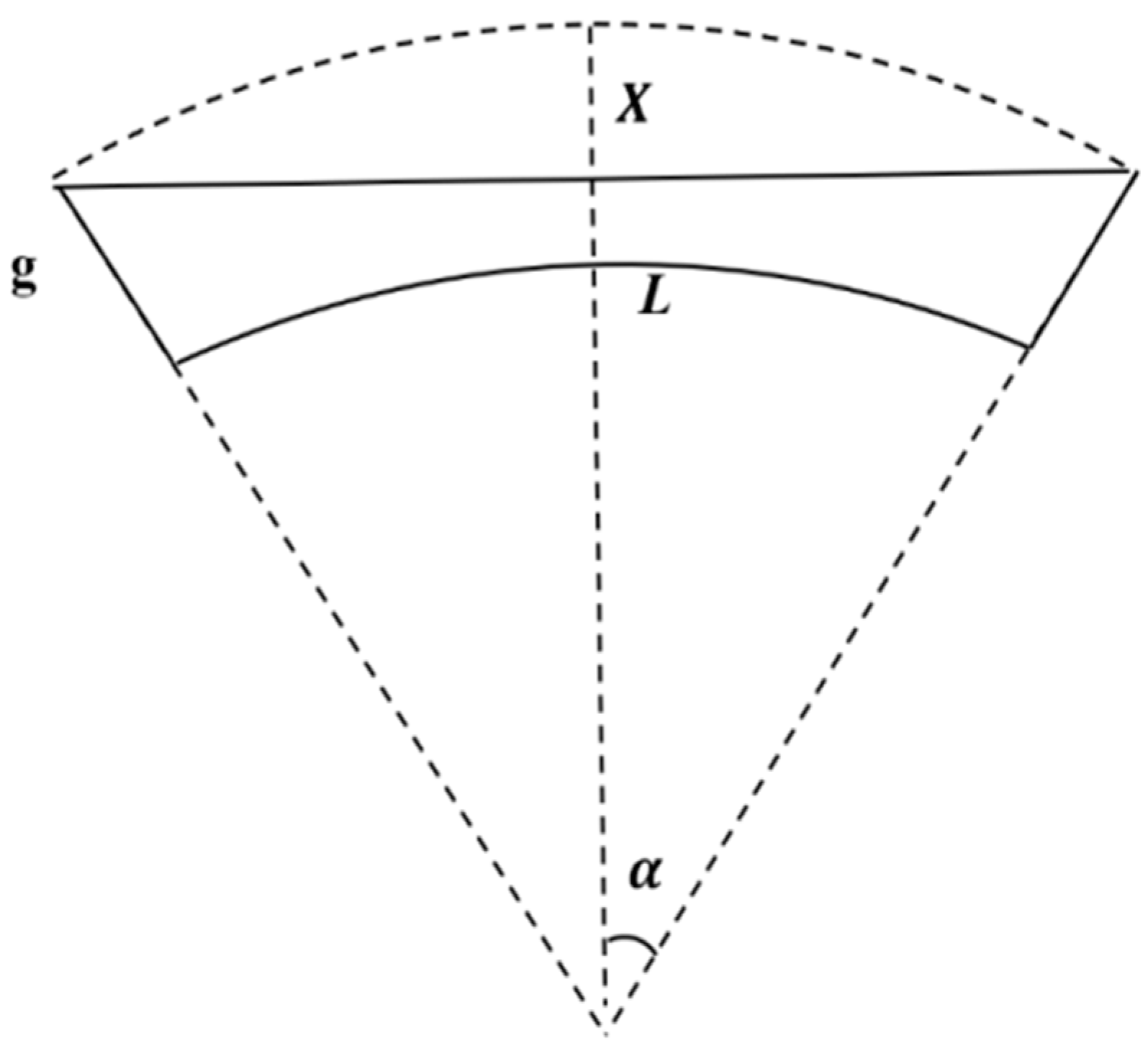

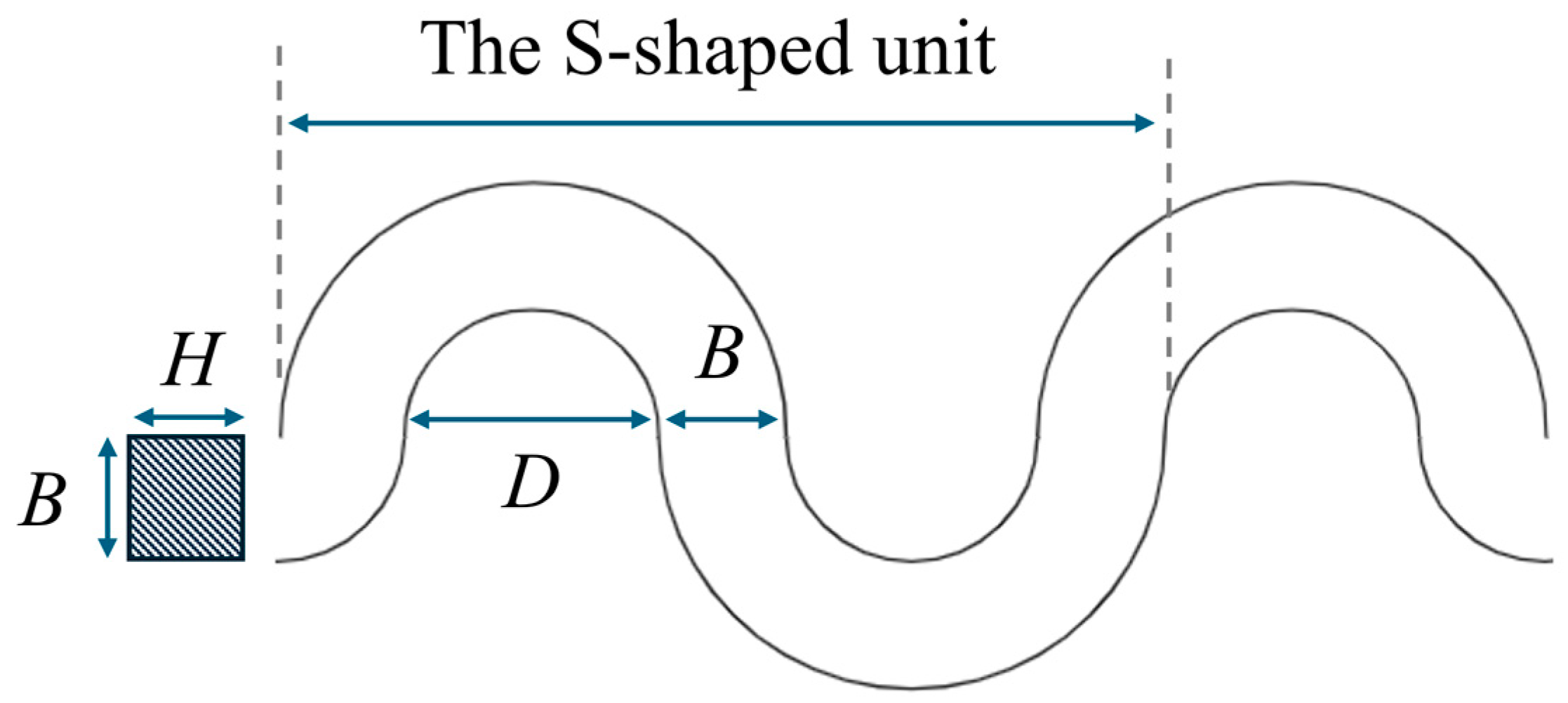
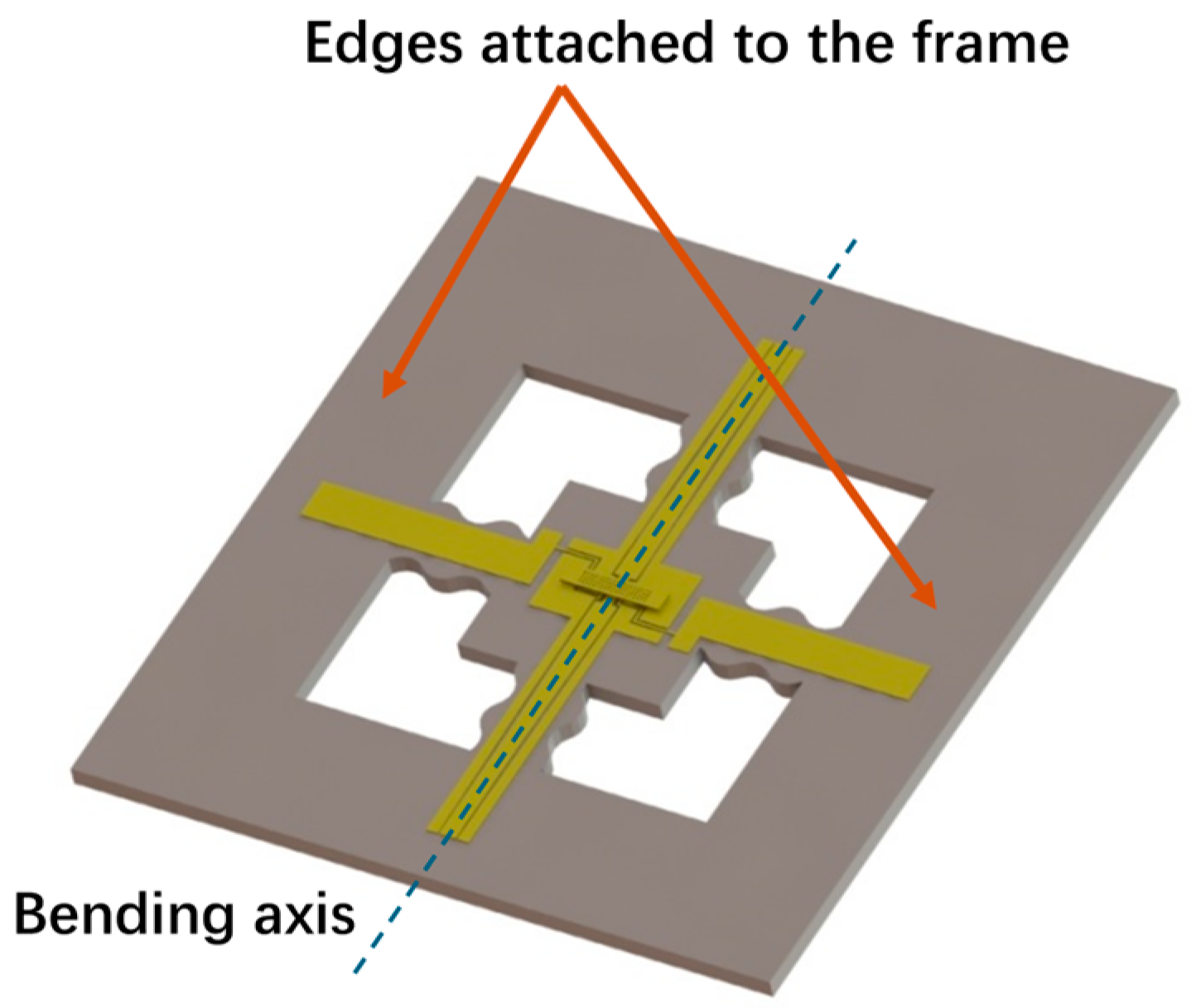
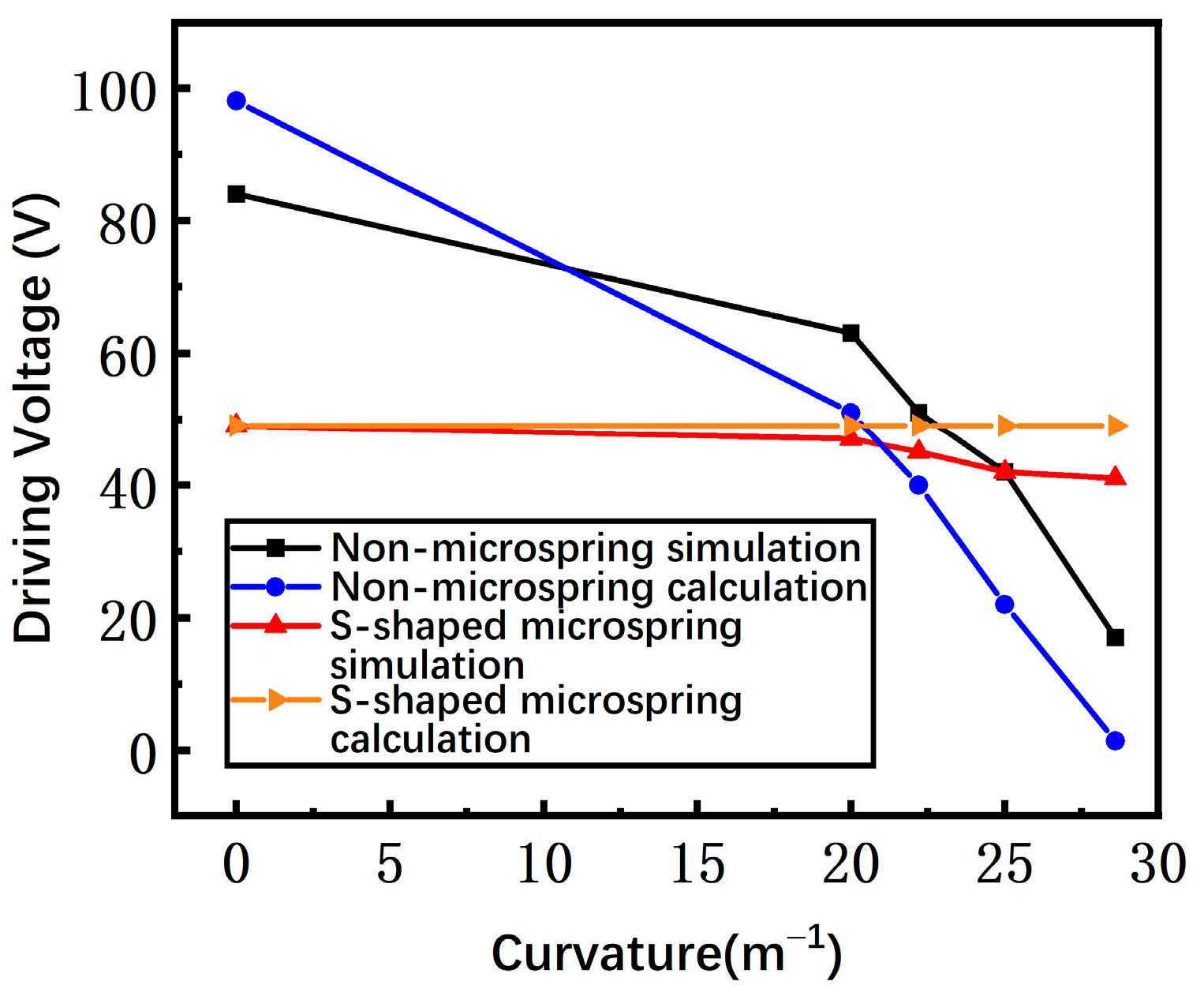
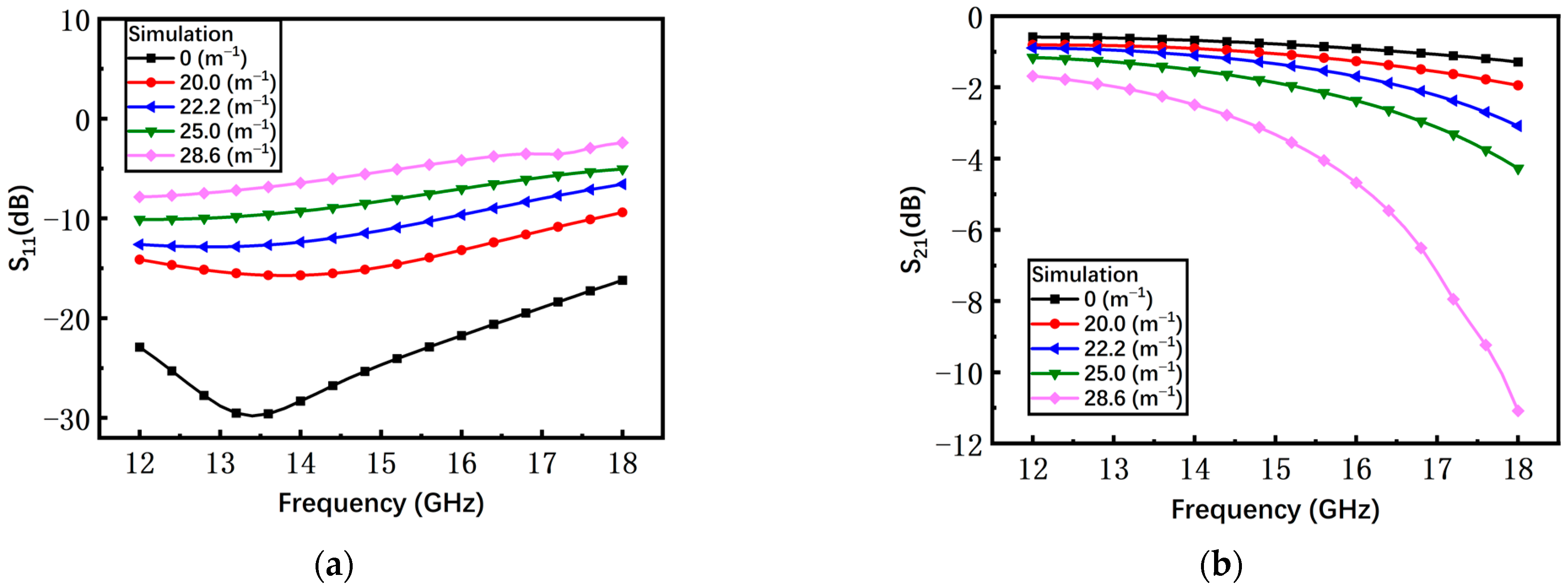
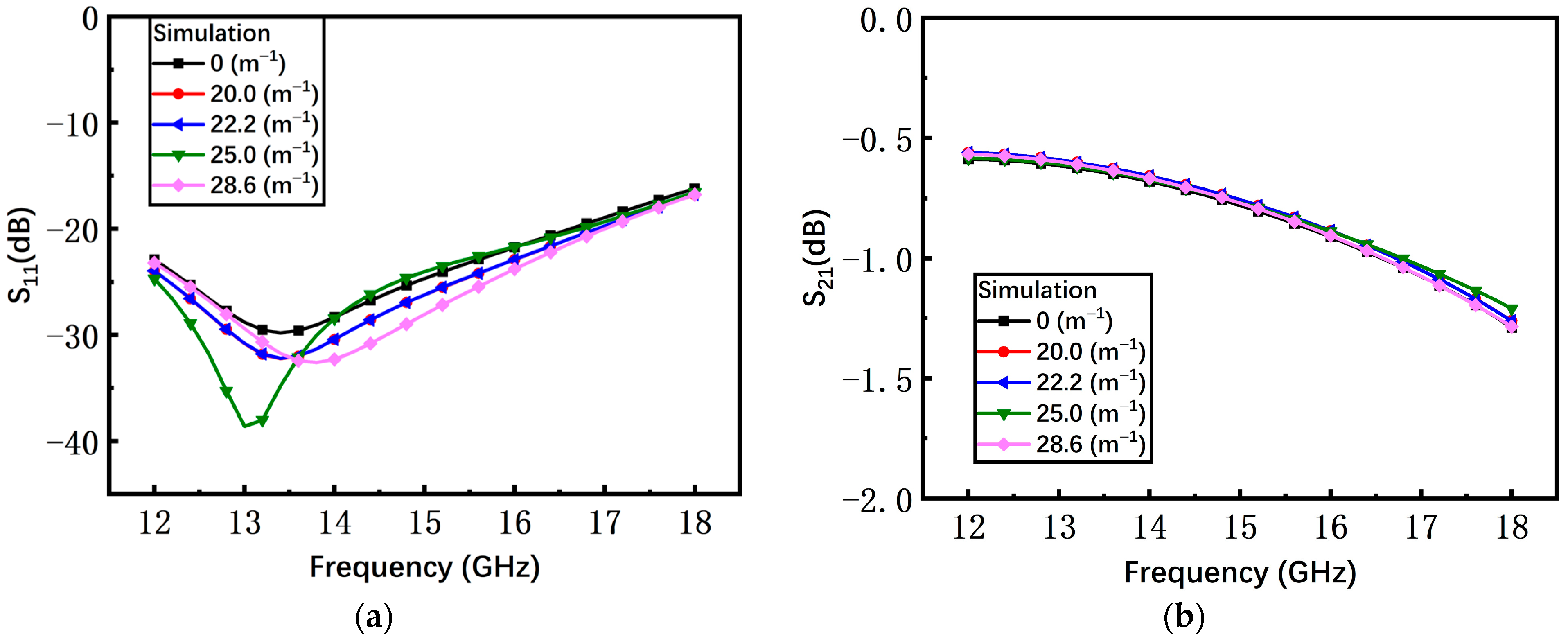
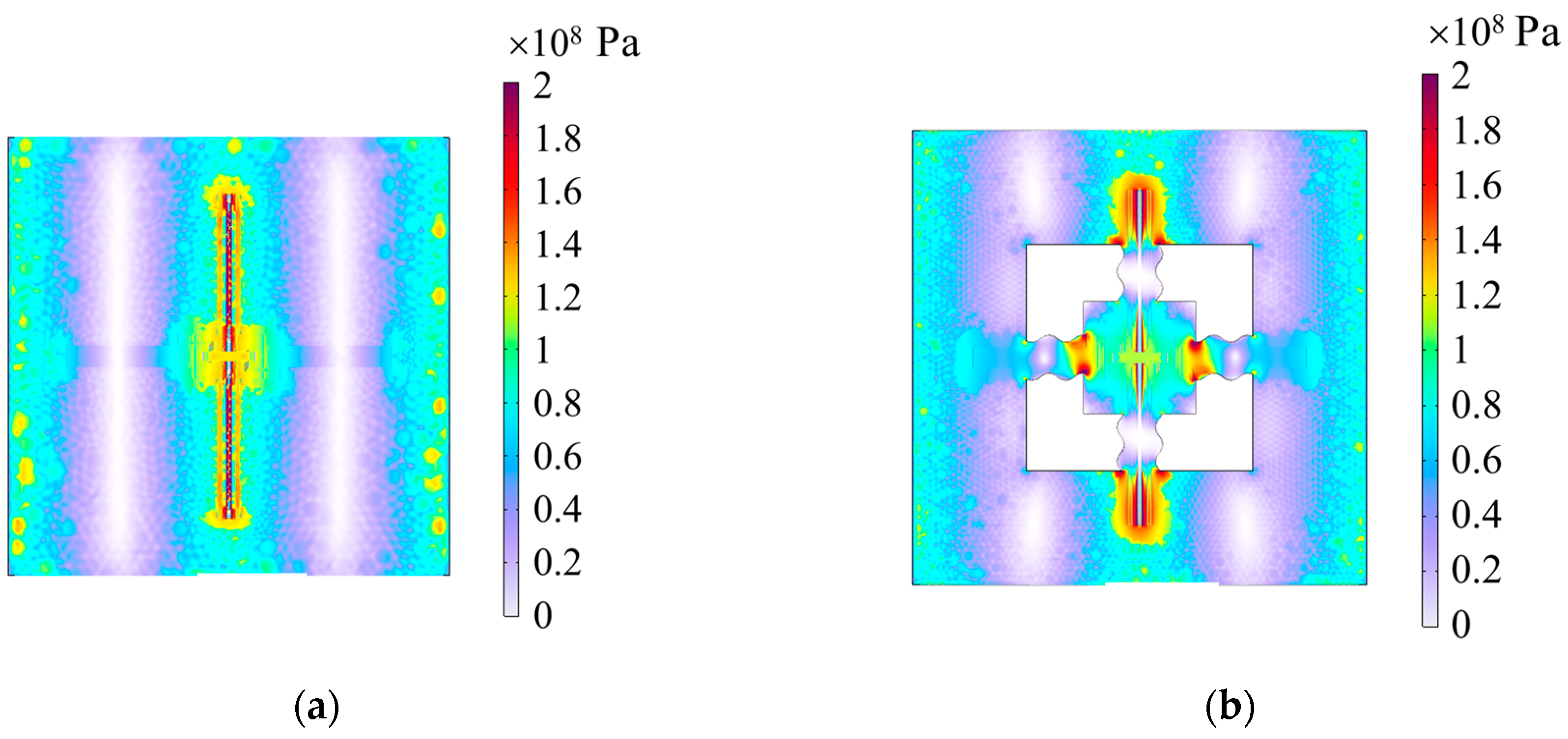
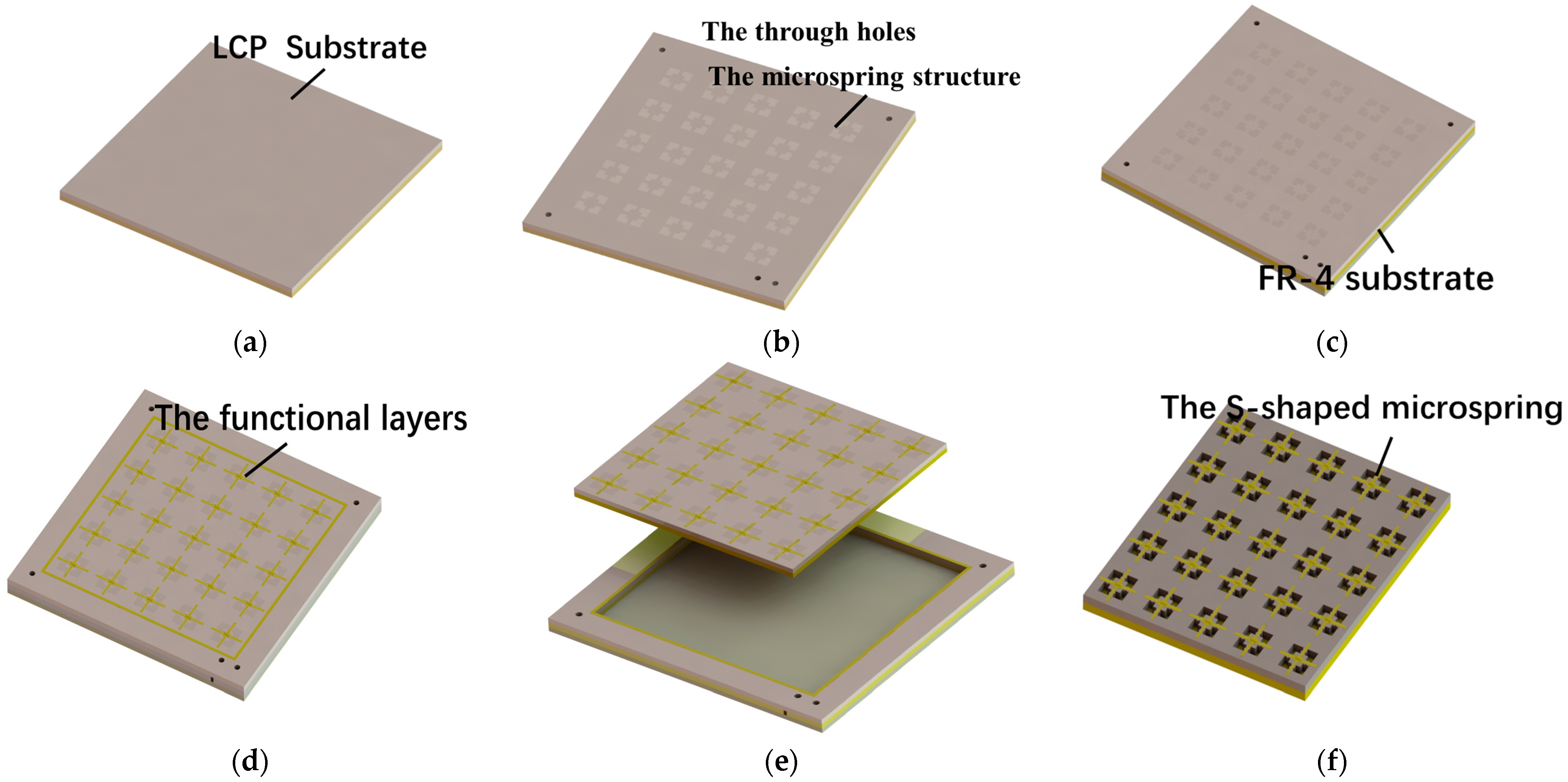
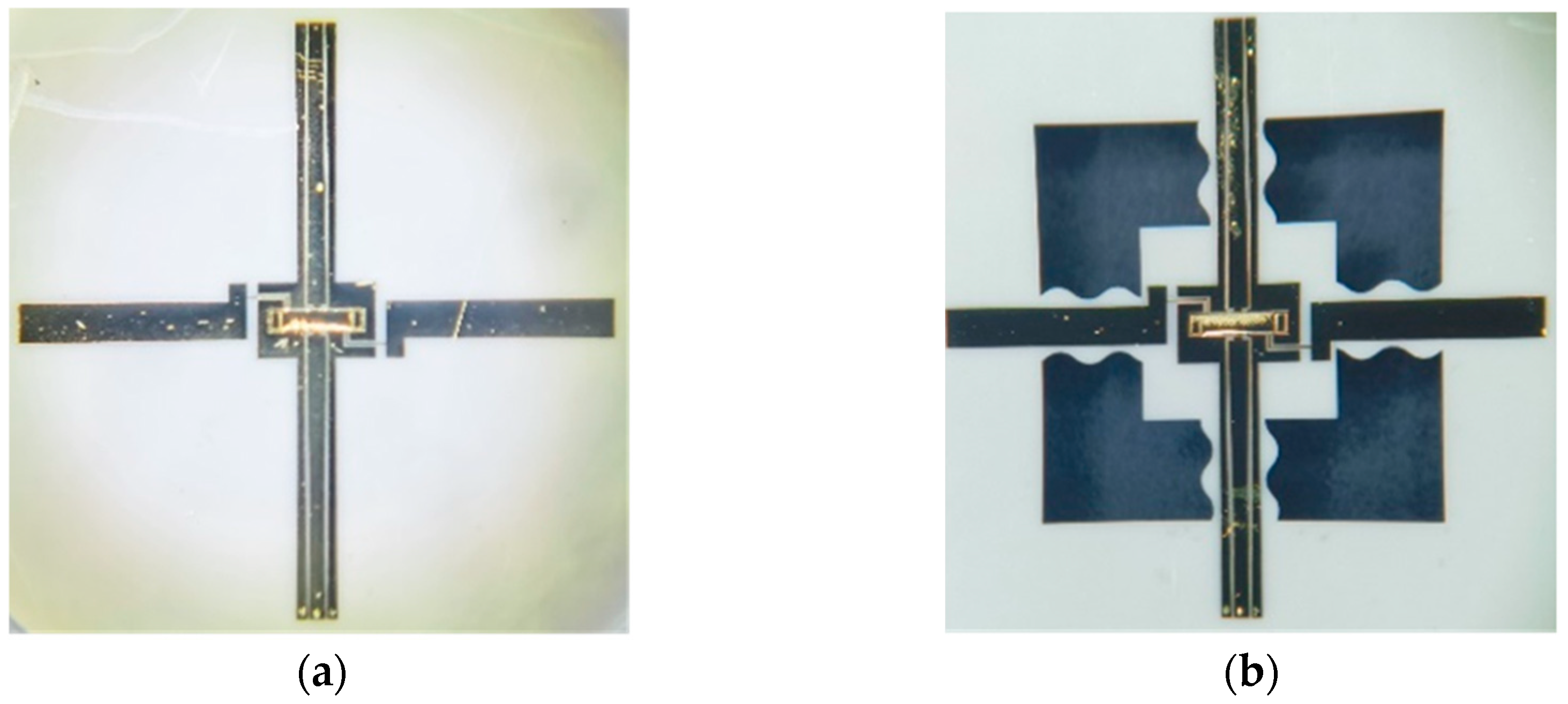

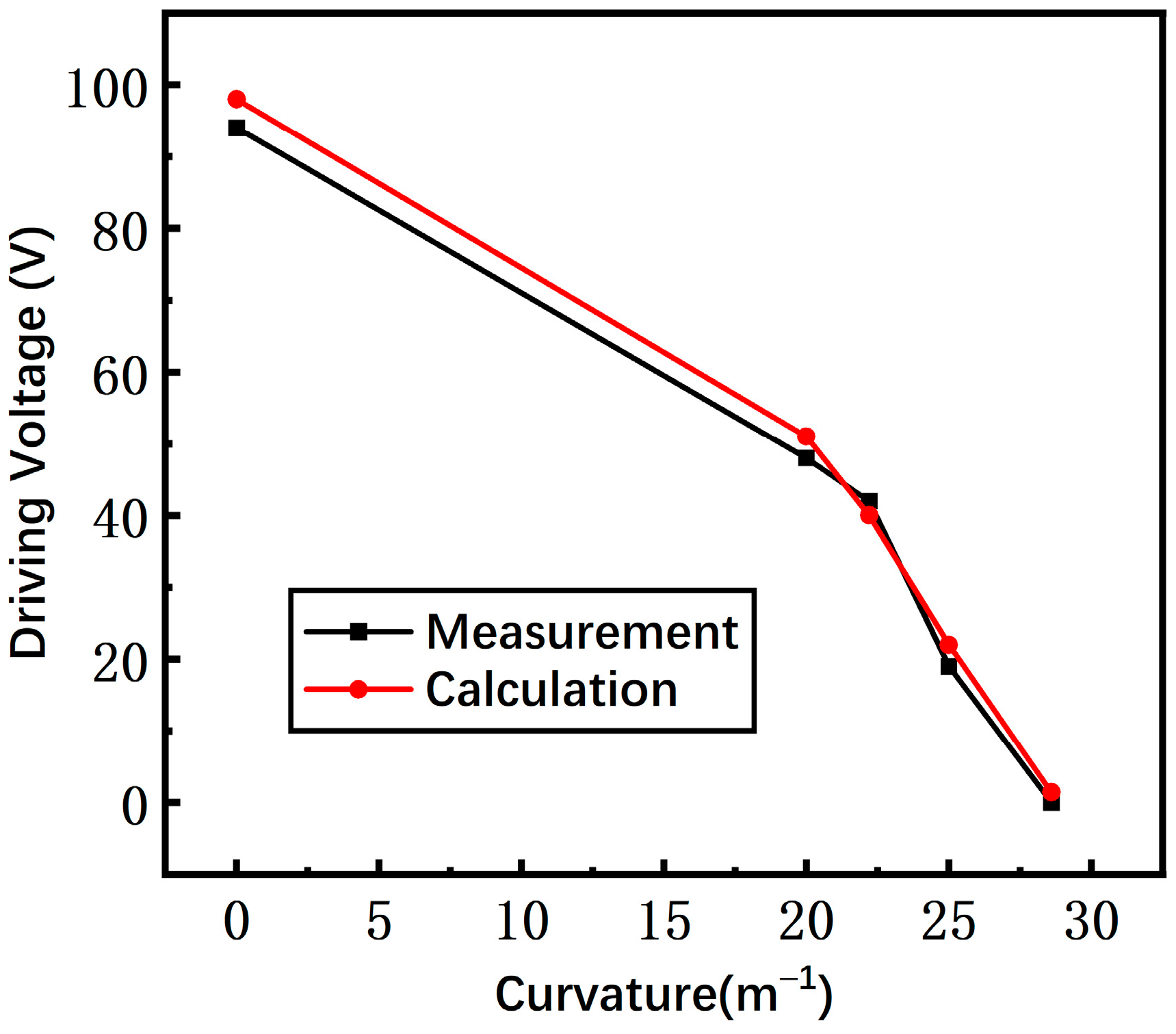
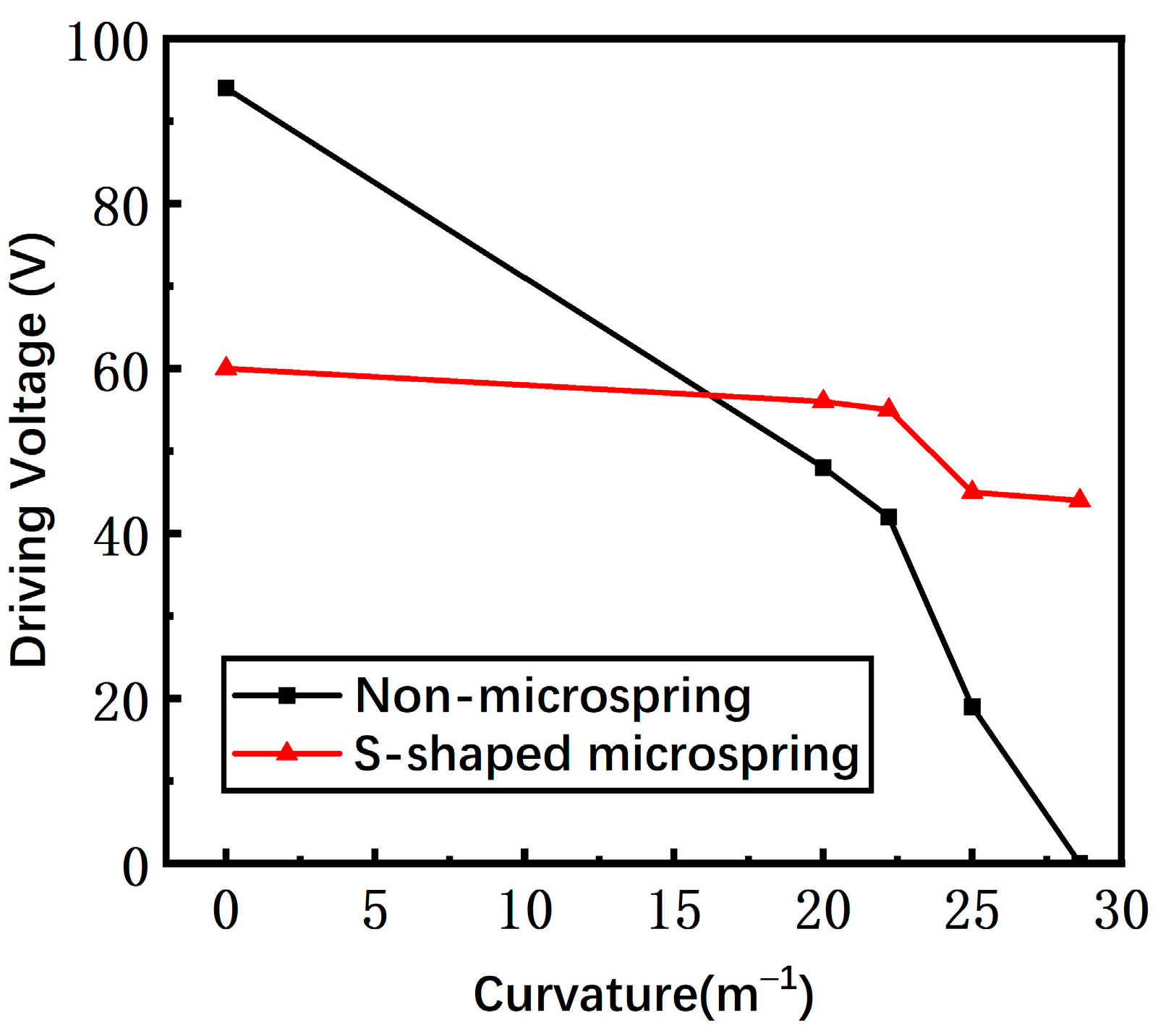

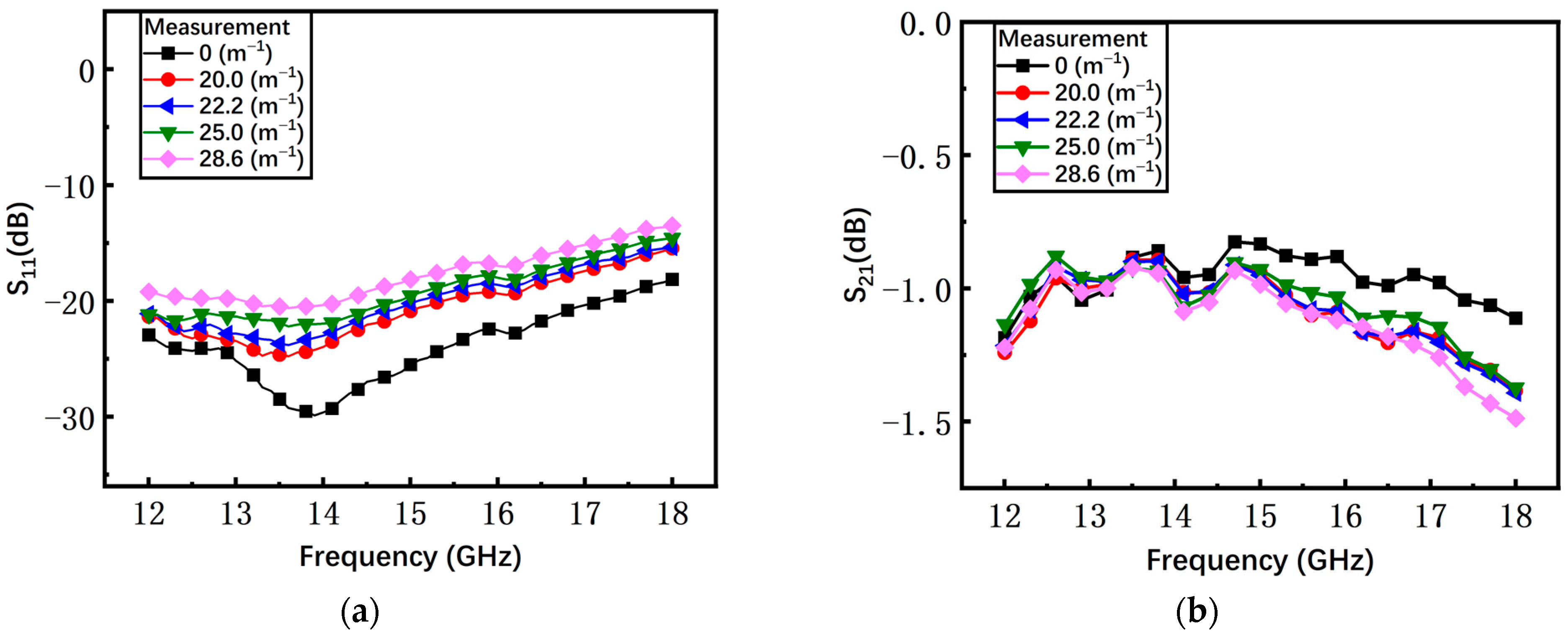
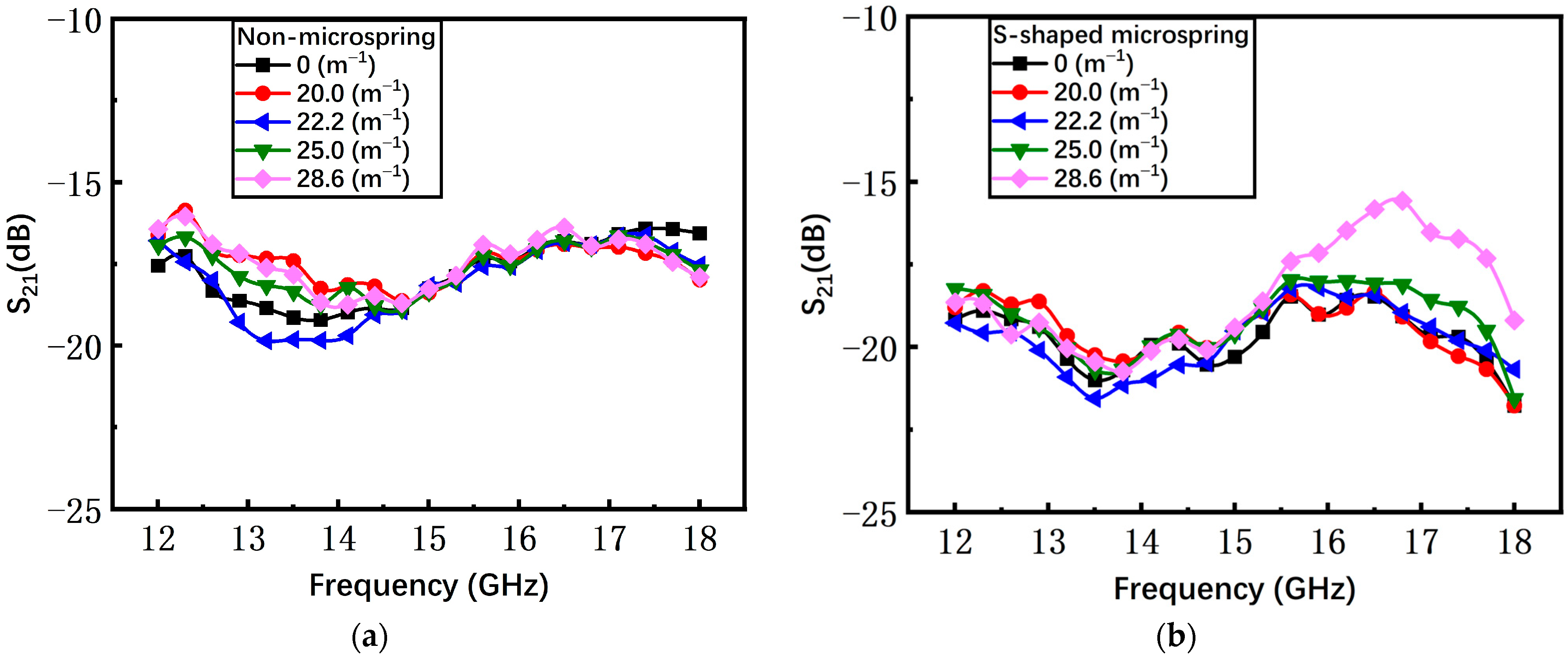
| Item | Size (μm) |
|---|---|
| Width of the beam | 190 |
| Length of the beam | 960 |
| Thickness of the beam | 2 |
| Width of the driving electrode | 200 |
| Length of the driving electrode | 200 |
| Thickness of the driving electrode | 2 |
| The gap between the original beam and driving electrode | 2 |
| Width of the cavity | 1970 |
| Length of the cavity | 1970 |
| Width of the S-shape microspring | 664 |
| Length of the S-shape microspring | 1015 |
| Package size of the switch | 6000 × 6000 |
| Width of the pad | 400 |
| Length of the pad | 2225 |
Disclaimer/Publisher’s Note: The statements, opinions and data contained in all publications are solely those of the individual author(s) and contributor(s) and not of MDPI and/or the editor(s). MDPI and/or the editor(s) disclaim responsibility for any injury to people or property resulting from any ideas, methods, instructions or products referred to in the content. |
© 2024 by the authors. Licensee MDPI, Basel, Switzerland. This article is an open access article distributed under the terms and conditions of the Creative Commons Attribution (CC BY) license (https://creativecommons.org/licenses/by/4.0/).
Share and Cite
Wang, K.; Chai, Z.; Pan, Y.; Gao, C.; Xu, Y.; Ren, J.; Wang, J.; Zhao, F.; Qin, M.; Han, L. Stress Suppression Design for Radiofrequency Microelectromechanical System Switch Based on a Flexible Substrate. Materials 2024, 17, 4068. https://doi.org/10.3390/ma17164068
Wang K, Chai Z, Pan Y, Gao C, Xu Y, Ren J, Wang J, Zhao F, Qin M, Han L. Stress Suppression Design for Radiofrequency Microelectromechanical System Switch Based on a Flexible Substrate. Materials. 2024; 17(16):4068. https://doi.org/10.3390/ma17164068
Chicago/Turabian StyleWang, Kang, Zhaoer Chai, Yutang Pan, Chuyuan Gao, Yaxin Xu, Jiawei Ren, Jie Wang, Fei Zhao, Ming Qin, and Lei Han. 2024. "Stress Suppression Design for Radiofrequency Microelectromechanical System Switch Based on a Flexible Substrate" Materials 17, no. 16: 4068. https://doi.org/10.3390/ma17164068






